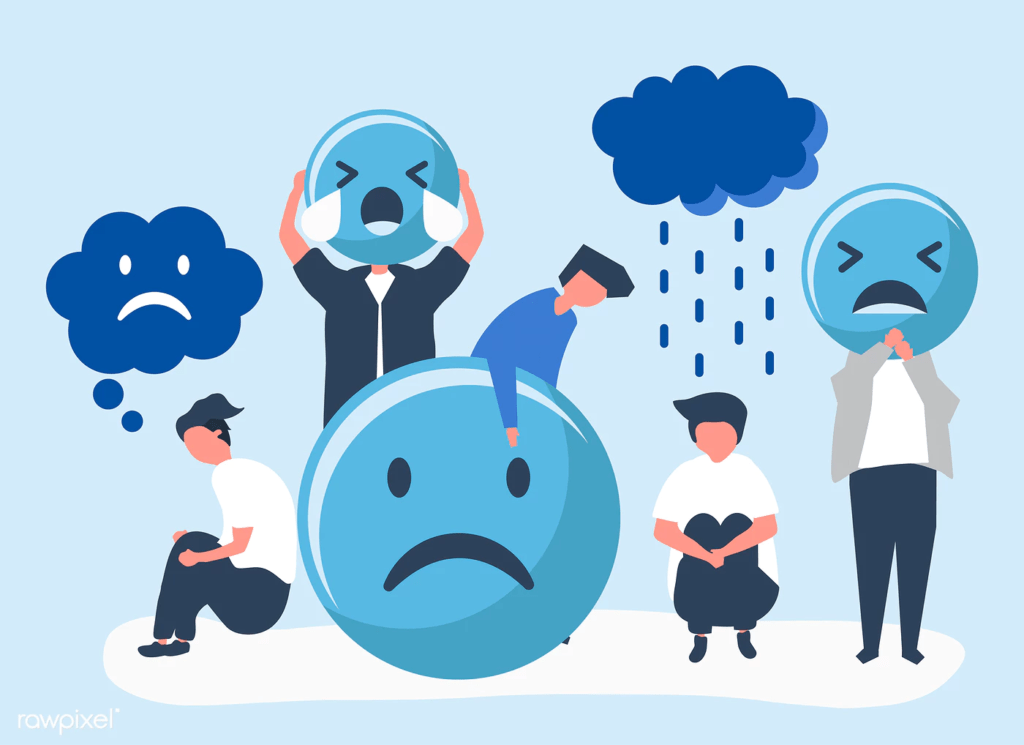Contents
- 1 What is Seasonal Affective Disorder (SAD)?
- 2 Symptoms of Seasonal Affective Disorder (SAD)
- 3 Types Of Seasonal Affective Disorder (SAD)
- 4 Causes And Risk Factors For Seasonal Affective Disorder (SAD)
- 5 Tips To Prevent Seasonal Affective Disorder
- 6 Difference Between Depression And Sadness
- 7 Treatment for Seasonal Affective Disorder (SAD)
- 8 When To See A Doctor?
- 9 Conclusion
What is Seasonal Affective Disorder (SAD)?
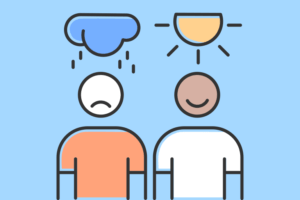
Seasonal Affective Disorder (SAD) is a type of depression that occurs at specific times during the year. It can be triggered by changes in daylight hours and is more common among those who live at higher latitudes. SAD is a form of clinical depression, which means that it has a specific set of symptoms that are different from regular sadness.
Sad in children
Seasonal Affective Disorder (SAD) can happen at any age, but it’s most common among adults. According to the National Institute of Mental Health, Seasonal Affective Disorder (SAD) may affect up to 5% of children and adolescents.
Symptoms of Seasonal Affective Disorder (SAD)
The symptoms of Seasonal Affective Disorder (SAD) can vary from person to person, but there are some common symptoms that are indicative of the condition. Some people with SAD may experience-
- Decrease in energy or motivation
- Feelings of hopelessness or despair
- Problems with concentration or memory
- Changes in sleep patterns
- Mood swings
- Changes to eating habits
- Development of other mental health conditions like anxiety or obsessive-compulsive disorder
Types Of Seasonal Affective Disorder (SAD)
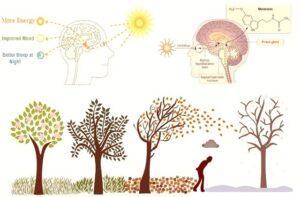
There are three subtypes of Seasonal Affective Disorder (SAD):
“Winter -onset SAD “: characterized by depression that begins in fall and continues through winter; typically starting around October or November and ending in late February or early March
“Spring-onset SAD “: characterized by depression that begins in winter and continues through spring; typically starting around April or May and ending in June or July
“Summer-onset SAD “: characterized by depression that begins in fall and continues through the summer months; typically starting around August or September and ending in October or November
Causes And Risk Factors For Seasonal Affective Disorder (SAD)
The exact causes of Seasonal Affective Disorder (SAD) aren’t yet known, but researchers believe that the condition is caused by a combination of genetic and environmental factors. The disorder seems to occur more often among those who live at higher latitudes, where there are large fluctuations in daylight hours. Researchers also believe that the neurotransmitter serotonin may play a role in triggering SAD.
Winter is thought to have an impact on the body by disrupting its circadian rhythms.
Circadian Rhythms
Biological rhythms- are changes in our bodies that happen over a 24 hour period, responding to external factors like light and temperature. Light exposure is thought to be one factor that can disrupt circadian rhythms, leading to Seasonal Affective Disorder (SAD). Light exposure regulates the production of serotonin, an important neurotransmitter believed to play a role in depression.
Some researchers believe that low sunlight exposure is to blame for Seasonal Affective Disorder (SAD). Many people with SAD experience “winter blues,” where their mood drops in fall and winter but improves in spring and summer. This improvement is often marked by an increase of light exposure, suggesting it may be the lack of light exposure that triggers Seasonal Affective Disorder (SAD).
Symptoms of the disorder may be fueled by a high intake of carbohydrates, which can lead to changes in serotonin levels and mood. Some scientists believe that people with SAD eat more carbs as a way to self-treat their depression. However, this carbohydrate cravings theory remains controversial.
Production Of Melatonin
The hormone that regulates sleep- is also believed to be affected by light exposure. This may explain the changes in sleeping patterns experienced by many with Seasonal Affective Disorder (SAD).
Due to its peak during the winter months, some researchers believe that SAD is triggered by shorter days and less sunlight rather than environmental factors like temperature or pollution levels.
Production Of Serotonin
The neurotransmitter believed to play a role in depression- is triggered by light exposure and regulated by the pineal gland.
The body of evidence for low serotonin levels playing a role in Seasonal Affective Disorder (SAD) comes from studies that show that symptoms improve with treatments like phototherapy, which increase serotonin levels. However, some researchers believe that other neurotransmitters and hormones may play a role in Seasonal Affective Disorder (SAD).
Tips To Prevent Seasonal Affective Disorder
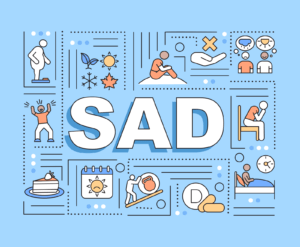
Seasonal Affective Disorder (SAD) can be very difficult to treat because its specific causes aren’t known. Antidepressants may be prescribed to help combat Seasonal Affective Disorder (SAD), but it’s important to remember that antidepressants are not always effective at treating the condition, especially during the winter months when sunlight is abnormally limited. These are the helpful tips to treat SAD-
Get Out Daily
Be sure to get outside daily, even if it’s just a walk around the block. It helps lessen depression by allowing you to absorb some light and keep your body clock set with a regular day/night cycle. For the most part of the day, sit near a window or in another well-lit area that allows you to see the sky and/or trees. The light stimulates your brain to produce serotonin, which helps boost moods.
Exercise Regularly
Exercise at least three times a week for twenty minutes. It has been shown that endorphins released during exercise can elevate spirits as well as improve overall health and mood. Remember- it doesn’t take much activity to give a mood a lift. It can be as simple as walking the dog, washing the car or going for a swim.
Eat Healthily
Eat a healthy diet that’s high in protein and complex carbohydrates, with moderate fat intake and low sugar levels. In particular, omega-3 fatty acids found in fish oil have been shown to alleviate depression associated with seasonal affective disorder.
Do Joyful Activities
Seek out things that make you happy and do as many of them as often as possible! This may be religious service, exercise, art or music therapy, spending time with friends or family; whatever it is that brings you the most joy and reduces your stress levels. The key to managing depression naturally is to build a healthy “toolbox” filled with activities that improve your mood.
Get Plenty Of Sleep
It’s easy to let the days get away from you, but try your best to stick to a regular schedule even if it means that some day’s “routine” is broken up into two or three shorter periods. Routine helps the body prepare for sleep, making it easier to fall asleep and stay asleep.
Use Reminders
Post quotes or pictures on your wall, refrigerator, or other places around the house that will be seen often. Even having a few of these motivational reminders can make all the difference in how you cope with the winter months ahead!
Try Yoga or Meditation
These techniques can make you more mindful about how your body feels, and help center yourself physically as well as mentally. Often people think of meditation as a “spiritual” practice but it can be a wonderful way to relax the mind and calm the soul.
Stay Hydrated
Drink plenty of water – hydration is important year-round but especially during the winter months when the air is dry.
Talk To Someone
If all else fails, talk to someone- finding someone with whom you can share your concerns and frustrations will help reduce stress levels; sometimes just venting is enough to make things seem manageable again.
Drink lots of water- stay hydrated! Sleep on a regular schedule- aim for 7-9 hours of sleep every night. Exercise at least 3 times per week for 20 minutes. Eat a healthy diet that’s high in protein and complex carbohydrates, with moderate fat intake and low sugar levels.
Difference Between Depression And Sadness

Sadness and depression are two different things that can look very similar at times. That’s because sadness and depression are both feelings that we all experience from time to time. Sadness can occur as a result of loss, such as the death of a loved one or as a response to difficult life events like divorce or unemployment. Depression is much more serious than sadness – it affects your mood, thoughts, and behavior. These feelings can affect your ability to work, study and interact with others.
Depression is more than just sadness – it’s an illness that needs treatment. If you experience episodes of prolonged or severe depression, then you may have clinical depression. Clinical depression is a mental disorder that requires medical attention. Symptoms of clinical depression include excessive sadness, changes in sleeping patterns, fatigue or loss of energy, weight loss or weight gain, feelings of guilt, and contemplating suicide.
The differences between sadness and depression are important because many people suffering from clinical depression may not realize there’s something wrong. People suffering from clinical depression often feel that their life is out of control and that things will never get any better. This is the time when you need to get help before feelings of hopelessness and despair get any stronger.
If you experience clinical depression, then it’s important that you keep an eye out for the signs and symptoms of Seasonal Affective Disorder (SAD). When your depression occurs seasonally, then this could be a sign that you’re suffering from Seasonal Affective Disorder (SAD). If you think that you may be experiencing Seasonal Affective Disorder (SAD), then it’s important to visit your doctor for treatment.
Treatment for Seasonal Affective Disorder (SAD)
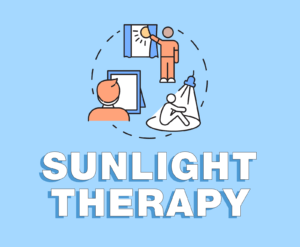 The symptoms of SAD can be treated through a variety of methods. The best course of treatment will depend on the severity of your symptoms, how long you have been experiencing them, and other medical concerns that may be present. Treatment options may include psychological therapies, light therapy, medication, or a combination of these.
The symptoms of SAD can be treated through a variety of methods. The best course of treatment will depend on the severity of your symptoms, how long you have been experiencing them, and other medical concerns that may be present. Treatment options may include psychological therapies, light therapy, medication, or a combination of these.
Psychological therapies– can involve interpersonal therapy, cognitive behavioral therapy, or psychodynamic psychotherapy.
Light therapy– involves the use of lightboxes that emit high-intensity light in order to increase energy levels and decrease feelings of depression. Among light therapy, options are dawn simulation devices like the Sunbox Professional Dawn Simulator.
Medication– can include anti-depressants and sometimes even anti-psychotics.
A combination of these treatments may also be used to treat SAD, especially if the symptoms of depression are severe or they have been going on for a long time.
In some cases, counseling with a qualified therapist may be needed as well.
If you think that you may be suffering from Seasonal Affective Disorder (SAD) please contact your local physician to discuss treatment options.
When To See A Doctor?
You should see a doctor if:
- – You don’t want to get out of bed in the morning, and it’s been going on for two weeks.
- – You’re having thoughts of suicide or hurting yourself.
- – You’ve lost interest in almost all things you used to enjoy. This includes TV, reading, music, hobbies, sex, friends, socializing.
- – You’re sleeping a lot more or a lot less than usual.
- – You’ve been eating much more or much less than usual.
- – Your appetite has increased and you’re putting on weight.
Remember, if you think that you may be suffering from Seasonal Affective Disorder (SAD), then it’s important to meet with your doctor for treatment.
The information contained in this article is general in nature and does not constitute medical advice or diagnosis. Please see your doctor discuss specific medical concerns.
Conclusion
SAD is a serious condition that can manifest as physical and emotional symptoms. It starts with the lack of adequate exposure to natural sunlight, which leads to an imbalance in your brain’s production of melatonin (the sleep hormone) and serotonin (a mood stabilizer). If you’re experiencing SAD, we recommend speaking to a doctor about treatment options. The most common treatment for seasonal affective disorder is light therapy, also called phototherapy or heliotherapy. If you are suffering from the seasonal affective disorder, then reach out to us. We are here to help.
For more information, please contact MantraCare. Depression is a mental illness characterized by persistent feelings of sadness, hopelessness, and loss of interest in daily activities. If you have any queries regarding Online Depression Counseling experienced therapists at MantraCare can help: Book a trial Depression Therapy session
